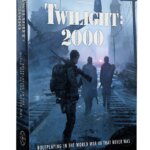Twilight 2000’s History
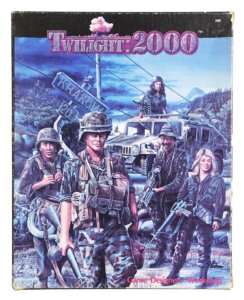
A fair number of post-apocalyptic and military role-playing games were on the market in 1984 when Game Designer’s Workshop(GDW) premiered the first edition of Twilight: 2000. TSR’s Gamma World, and TimeLine Ltd.’s The Morrow Project were both well established by then. So were Fantasy Games Unlimited’s all-purpose apocalyptic survival game Aftermath!, and Recon—a game set in the Vietnam War. Where Twilight: 2000 distinguished itself among these competitors was its absence of any science-fiction elements. Its vision of a scorched future is realistic and seemed to be creeping closer with every passing day.
The year prior to Twilight 2000’s release had seen President Ronald Reagan introduce his Strategic Defense Initiative. There was also the premiere of The Day After—a made-for-television film depicting the aftermath of a nuclear strike. So, Twilight 2000 just seemed like the latest blip on the Cold War radar—one of a long series of incoming signals that the apocalypse was nigh.
The Apocalyptic Setting
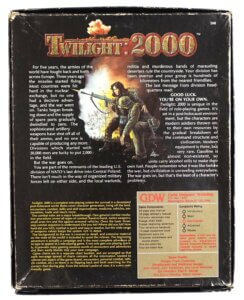
GDW’s Twilight: 2000 is set years into a global war between the Soviet Union, the United States, and their allies. The war went momentarily hot, but even just a few nukes proved to be enough to push the world toward near total collapse and now the war grinds on using whatever conventional weapons anyone who still wants to fight can find. The player characters are members of the United States Army who have been abandoned. Following a failed offensive to push the Soviets out of Eastern Europe, they are now on their own.
Granular Decision Making
If you were a military buff with a head for numbers, then GDW’s Twilight 2000 was a dream come true. The rules were as precise as you’d expect for the title—an exercise in war simulation as much as role-playing. and it came overstuffed with details on small arms, armored vehicles, and other kinds of military gear. Character creation was methodical, slow, and required a little bit of math, though, and combat was brutal. You might have to accept that the character you have spent a couple hours creating dies the moment combat starts!
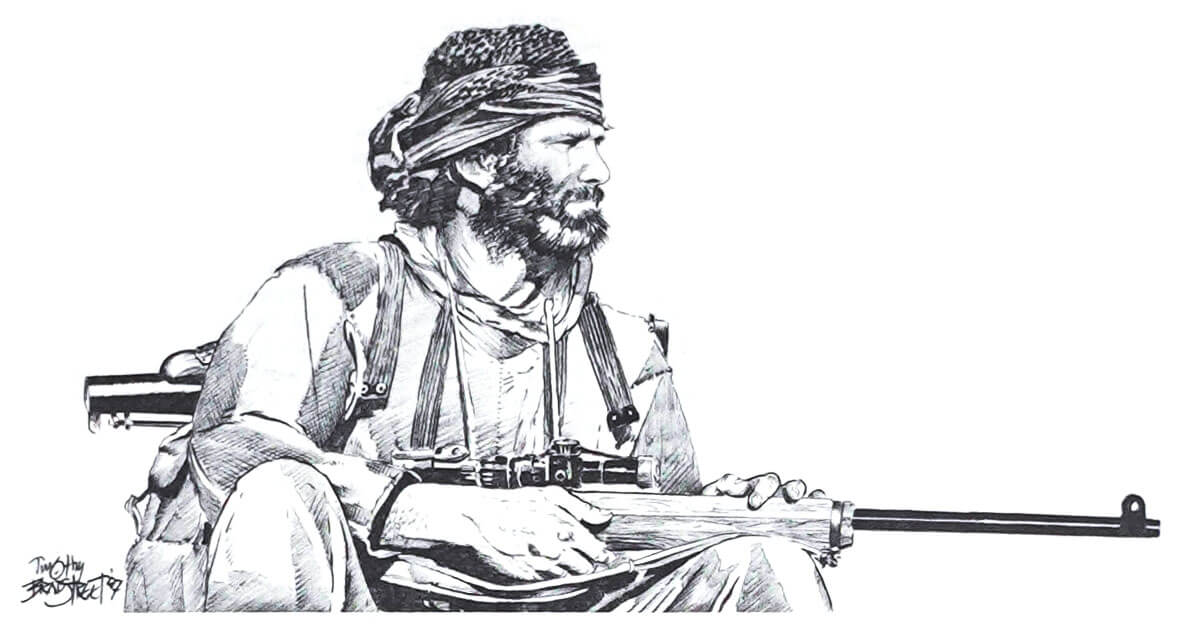
GDW stuck with its design ethos of calculated realism at any cost through several editions and a handful of spin-offs. People who loved Twilight: 2000 really loved it. Playing it was an awesome experience for the kind of gamer who liked to sweat the small stuff and favored bloody verisimilitude over fast play. For others, though, it could be a little much, which was kind of a shame for people who might otherwise enjoy the kinds of stories to be told in such a setting.
The New Twilight 2000 (4th edition)
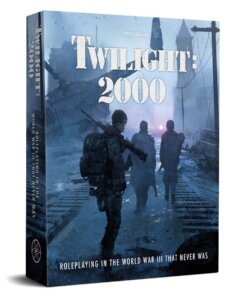
Flash forward to the present day, and Twilight: 2000’s vision of a Russo-American Cold War gone hot seems unnervingly possible again as the United States and post-Soviet Russia rattle their sabers over the disposition of Ukraine. It’s not a great situation for anyone, obviously, but it gives Free League Publishing‘s new reboot, Twilight: 2000—Roleplaying in the WWIII That Never Was, a little more relevance than just being the return of a retro favorite.
Recently arrived in stores, this new Twilight: 2000 keeps the setting and timeline of the original game. However,it swaps out GDW’s percentile system for Free League Publishing’s own Year Zero Engine. The Year Zero Engine is the same easy-to-learn, but surprisingly robust, dice pool system that powers Mutant: Year Zero, Tales from the Loop, and the Alien role-playing game. Modified slightly for Twilight: 2000, it is even easier to pick up if you’ve played one of those games!
Character Creation & Task Resolution
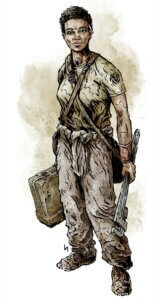
Creating characters is a cinch, with the option of starting with one of several archetypes or using the Life Path method, a step-by-step generation system that compares favorably to Traveller’s own. Life in what remains of the Army is still the focus of the game, but there are several non-military career paths offered. Law enforcement, intelligence, crime, and more make it easier to play a non-traditional character path.
Task resolution In Twilight 2000: Roleplaying in the World War III That Never Was is just as simple as character creation. Attributes and skills are both represented by a single polyhedral die rating from d12 to d6. Roll a single 6 on either of them and the action succeeds. Roll a 10 or better on either die and the action succeeds exceptionally. If you don’t succeed, you can choose to “push the roll.” Pushing a roll allows you to re-roll any die that didn’t result in a 6 or a 1. Those 1s don’t normally matter, but if you choose to push the roll then they are converted to physical damage or psychological stress. You must accept the results of the second, pushed roll—succeed or fail—and you can only push a roll once!
Combat
Combat works similarly with the addition of six-sided “ammo dice.” Each weapon has an ammo dice rating which represents the number of dice that can be added to an attack roll depending on how many shots are fired. Each six results in an extra point of damage. If you push the attack roll, any 1s that are rolled means that you might have damaged your own weapon. It is possible to shrug off some damage with the right armor and proper cover. However, the hit location and critical injury system means that any bullets that do find their way through wreak havoc. They can inflict truly gruesome wounds that disfigure, maim, or kill outright. Players who go looking for fights will find them, although they’ll probably wish they had not!
Survival
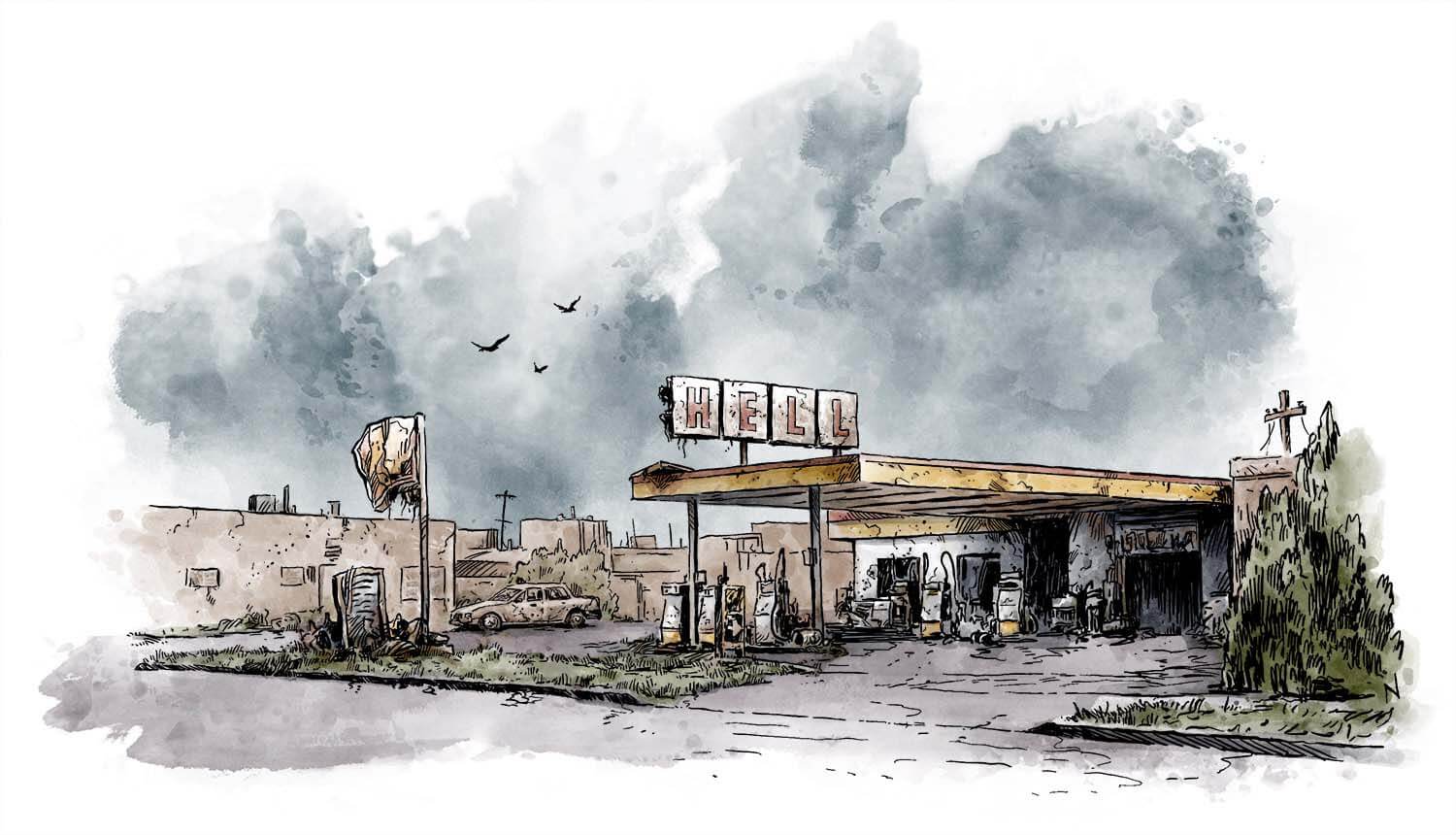
Outside of firefights, there are plenty of other ways to die in the world of Twilight: 2000: Roleplaying in the World War III That Never Was. Cholera, dysentery, and other diseases are back with a vengeance. Chemical weapons have poisoned the soil and water. Lethal doses of radiation still linger in massive craters and abandoned ruins. Food is scarce, and death by starvation isn’t necessarily unlikely. The players are bound to deal with any of them on a day-to-day basis. Or they’ll still have to choose to help or ignore others affected by them, because travel is a big part of the game.
Half the world’s population is dead now thanks to disease, famine, and violence. The majority of those left alive are barely hanging on. Strangers generally aren’t welcomed with open arms, and peace doesn’t last for long. There’s always a good reason to stay on what’s left of the road, even if it’s just to find a place to camp for the night.
Closing Thoughts
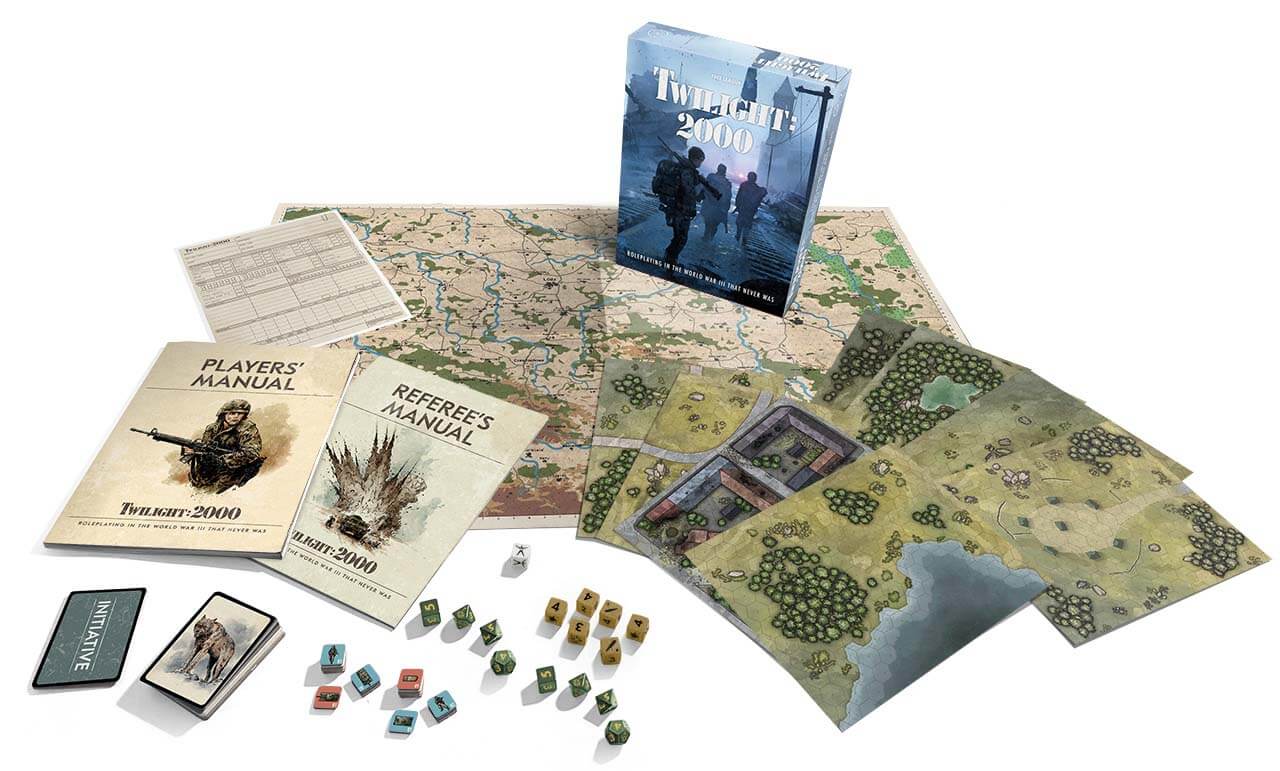
Keeping Twilight 2000 moving is easy thanks to the included maps of Poland (the primary setting) and Sweden (alternate setting). The maps—along with a deck of encounter cards and plenty of charts—help to inspire your own creations. There are also some major stand-alone locations that are detailed in length that can be dropped anywhere on the map. Plus, extensive notes on the current state of every region in the campaign world. If you’ve ever played a wilderness “hexcrawl” campaign in Dungeons & Dragons or another system, this will all be very familiar.
Whether you’re a longtime fan or brand new, I’d strongly recommend you give Twilight 2000: Roleplaying in the World War III That Never Was a look. It’s a gorgeous, accessible, and unremittingly dark little sandbox of a game that I think you’re going to love. Of course, if you’d rather stick with the classic game, there’s still plenty of preowned products available on the used market and lots of fan support online.
[ Adapting Older D&D to Modern Rules ]
[ Browse all RPGs ]

Written by Rob Matthews
Rob Matthews is a writer and lifelong gamer. When he’s not rolling dice or herding words, you can find him drawing, training in the martial arts, or planning his next tattoo.

